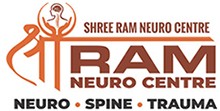Kyphosis which is commonly known as ‘Hunchback’ or ’roundback,’ is a spinal deformity resulting from the outward growth of the spine. The spine in the human body has curves that make it possible for the human being to stand , sit, walk erectly. If the spinal curves happen to be too large or too small due to any biological reasons, it causes problems in our standing, sitting positions, and our body appears abnormal. The range of curvature of the thoracic spine ranges between 20 and 45 degrees. Curves beyond this range become a cause of the problem and in medical terms referred to as Kyphosis. It can affect the person of any age, but the medical history shows more chances of ailment developing at the time of adolescence when bone growth is at its peak. Postural kyphosis leads to the development of a round and smooth curve that is the cause of poor posture or slouching. Scheuermann’s Kyphosis is more severe in nature and condition than the former. Vertebrae have a triangular shape than a rectangular shape due to which they wedge together towards front of the spine causing, a sharp rigid curve. Congenital Kyphosis develops in the womb when either, the bone does not form as they should or, vertebrate gets fused. The situation worsens with the time as the child grows. It requires surgeries at a young age to stop the growth of curves, and it also leads to the development of many other dysfunctionalities in the womb. Treatment includes non-surgical procedures like medications, physical therapies, bracing, and exercises. The surgical procedure for treatment is the spinal fusion that involves initially realigning the curved vertebrate, filling the gaps with bone grafts that fuse with time, and grow into one single bone.
Book an Ambulance
ਐਂਬੂਲੈਂਸ ਬੁੱਕ ਕਰੋ
Book an Appointment
ਮੁਲਾਕਾਤ ਬੁੱਕ ਕਰੋ

